

Mark Lesser interview
By Scott Stilphen
(2007)
Mark started designing some of Mattel's best-known handheld games and eventually started his own company, making games for EA.
Q: What’s your educational background?
Mark Lesser: I have a B.S. in Electrical Engineering from MIT
Q: What inspired you to go into game design?
Mark Lesser: After college I joined the Microelectronics Division of Rockwell International in Anaheim California as a circuit designer. This was around 1972. After designing a number of circuits for handheld calculator chips and I/O chips, I was offered a choice of new projects, including a wild idea presented to Rockwell by Mattel Electronics which called for converting a handheld calculator into an electronic game. I always loved games of all kinds, so I jumped at what seemed to me a fun opportunity. Rockwell did not share my enthusiasm, so without a whole lot of support it was left up to me to both design the hardware chip and program the game.
Q: Were there any programmers or games that inspired you?
Mark Lesser: In those days, I mostly loved the newest pinball games, but I think my most inspiring experience came from a TV show when I was a kid which allowed you to trace along with an artist on the show by attaching a stick-on clear plastic film to the TV screen. The idea of interacting with the TV made a big impression on me. Remember that this was way back when arcades consisted of skee-ball, pinball, and pool. Television was still fairly new. Regarding programmers, my first inspiration was Bruce Kinney at Rockwell who was one of the many unsung tech heroes that quietly managed to create microprogramming languages for the early handheld calculators.
Q: Did you work for anyone prior to going to Rockwell International (after school)?
Mark Lesser: No. After school I took off to Central America for adventure and when I returned, I got my first real job at Rockwell.
Q: How did you hear about Rockwell? When did you start working there (in the Microelectronics division)?
Mark Lesser: I was living in Laguna Niguel, California with my in-laws, and I answered a want-ad in the newspaper for a job at Rockwell in Anaheim. I got the job as circuit designer in the Microelectronics Division around 1972.
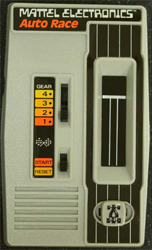 Q: You did the programming for 5 of Mattel’s earliest handhelds there: Auto
Race, Baseball, Brain Baffler, Football, and Horoscope Computer. Were these the only handhelds (released or otherwise) you worked on? Did you work on any that weren’t released?
Q: You did the programming for 5 of Mattel’s earliest handhelds there: Auto
Race, Baseball, Brain Baffler, Football, and Horoscope Computer. Were these the only handhelds (released or otherwise) you worked on? Did you work on any that weren’t released?
Mark Lesser: I also programmed Missile Attack, which was a variation of the Auto Race program. The game involved protecting a city from attack. Later this was changed to Flash Gordon which was just a different theme. I don't know if either was actually released (Ed. According to the info on this page - http://www.handheldmuseum.com/Mattel/FlashGordon.htm it was never released as Flash Gordon. However, it did see release as Missile Attack originally, and then Battlestar Galactica or Battlestar Galactica: Space Alert).
Missile Attack http://www.handheldmuseum.com/Mattel/MissileAttack.htm
Battlestar Galactica http://www.handheldmuseum.com/Mattel/Battlestar.htm
Plus a US Magazine version! http://www.handheldmuseum.com/Mattel/Proto.html)
Q: Auto Race has the distinction of being the first all-electronic game. How did Rockwell (and yourself) come to be involved with programming these? And did you write the programs or did you port code written by others (such as George Klose and Richard Cheng)?
Mark Lesser: Mattel approached Rockwell with the idea of converting a calculator into a handheld game, and George Klose and Richard Cheng came up with a one sheet description of an auto race game, using blips of light. They had the general idea of what the game should look like, but no one had any concept of how to implement the game, or even if it was feasible much less marketable. I started by consulting with the engineers at Rockwell to determine what chip we had that might be modified to implement such a game. We came up with one of the simple handheld LED calculator chips which had 511 bytes of ROM space for a program. This chip would need to be redesigned to allow for a display of the playing field and the score digits and to make sounds and read the input switches. It was up to me to do the actual chip redesign and to write the program from scratch. The design work included a multiplexing scheme for the display outputs to allow the eight numerical digit drivers to handle the playfield and the informational display. The sound was implemented using a single output and a piezo-ceramic speaker - one output line to generate sounds and music, such as it was, without any sound driver hardware. The toggling of the speaker had to occur within the program loop, with variable timing to produce tones. In addition, all the game logic, score keeping, timing and display was limited to 511 bytes of code!
Q: I remember reading an account of how Auto Race was developed in that the hardware design came first, and it was thought it could be used for one of two different games – one being a racing game (I forget what the other one was, perhaps Football? It was something completely different…). Does this sound familiar?
Mark Lesser: It is true that I did the circuit design on the chip before doing any programming, but I have no recollection of discussing two different games until after I finished Auto Race (Ed.: Auto Race was re-released overseas in 1980 as Ski Slalom: http://www.handheldmuseum.com/Mattel/SkiSlalom.htm)
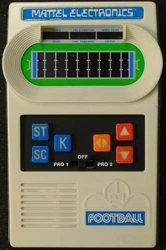
Q: Why did Football only depict a 90-yard field? Was it due to a limitation of the chip? It’s interesting to note that the Coleco football handheld (that came out in 1978) also had a 90 yard field. Also, the re-releases of Football (in 2000-2001) kept this same limitation!
Mark Lesser: I was constrained in Football by the number of drivers on the chip (a different chip than for Auto Race), and this drove the design for a multiplexing scheme which allowed no more than 9 yard positions on the display at a given time.
Q: How did Coleco get away with making a knock-off of it?
Mark Lesser: Mattel actually filed a lawsuit against Coleco for their handheld sports games, which Mattel said violated patents owned by Mattel. There were at least two lawsuits, and I spent a full week in deposition with Mattel attorneys in Ellsworth, ME. Mattel's lawyers, however, were not as savvy as those hired by Ray Dolby, and the patents filed did not hold water. The lawyers probably made more money processing useless lawsuits than I did developing the games!
Q: You might also have a first with Horoscope Computer – the first game to have a built-in limited lifetime: http://www.handheldmuseum.com/Mattel/HC.htm
“An interesting note is that according to the instructions on the back, this game is only accurate from June 1, 1979 to December 31, 1987.”
Mark Lesser: I did all the programming, but the astrology algorithm design was done by a consultant, I am happy to say.
Q: How was it to program these games? What equipment was used?
Mark Lesser: The language used was a primitive assembly language that was ad hoc to the specific chip being programmed. The instruction set was very small and the assembler was implemented on a main frame computer at Rockwell. The program was entered as a batch job using IBM computer punch cards. After assembly, the code was burned onto an EPROM and debugged on an emulator built specifically for the game. The I/O instructions were intimately tied to the hardware, and knowledge of the hardware was crucial to squeezing the program into such a tiny memory space. I remember one instruction which updated a display driver from the contents of a register after some internal delay. To save code, it was possible to execute that instruction prior to loading the register, which saved a NOP delay instruction.
Q: Do you recall seeing any TV commercials or ads for these games? Apparently there was a commercial made for Missile Attack, but NBC refused to air it (http://www.handheldmuseum.com/Mattel/MissileAttack.htm).
Mark Lesser: I worked at Rockwell at the time, so I was insulated from the marketing end of things. I also never watched TV in those days.
Q: How did you come to work for Parker Brothers? When did you start/leave?
Mark Lesser: After working at Rockwell for about 4 years, I moved to a cabin in the woods of Maine while continuing to develop handheld games for Mattel directly as a contractor. I was traveling between Maine and California. Eventually I read in the Boston Globe that Parker Brothers was looking to hire someone to develop electronic games, so I applied for the job. I think that was in 1980 and I ended up working at Parker Brothers up until 1984.
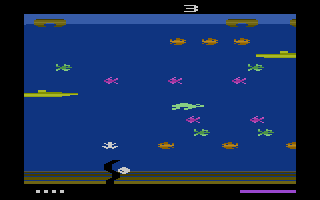 Q: Was Frogger II the first time you ever programmed for the 2600?
Q: Was Frogger II the first time you ever programmed for the 2600?
Mark Lesser: I believe so, although I may have done some VCS work before that.
Q: Were you able to use any code from Ed English’s Frogger?
Mark Lesser: No. The game was redesigned from scratch. Libraries of utility routines that had been developed primarily by Rex Bradford were available to all the developers.
Q: A few prototype carts of Lord of the Rings have popped up (along with some prototype boxes) and they all seem about the same. Is the game actually complete? Were you happy with how it turned out?
Mark Lesser: The game was complete, and as it was my original work, I was disappointed that it was never marketed. Frankly, the results were somewhat less than satisfying. There were some ideas I thought were good, but the graphics and tuning needed work. The beautiful scenery of the woods and town that I had envisioned simply did not materialize. I did love the horizon sunsets/sunrises.
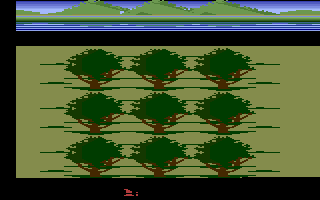
Q: Parker Brothers had announced a sequel to Lord of the Rings (titled appropriately enough, Lord of the Rings II). Was any work started on this?
Mark Lesser: When I first started LOTR, there was talk of a three part series covering the whole of the story, but only the first game materialized.
Q: Both Intellivision and Atari 8-bit (400/800, and possibly 5200?) computer versions of LOTR were also announced. Do you recall anything about these?
Mark Lesser: No.
Q: It’s a shame Parker Brothers never released them (even though they advertised them in their catalogs). Do you recall why it wasn’t?
Mark Lesser: The marketing decisions were rarely accompanied by believable explanations, so I don’t really know what happened.
Q: According to Larry Gelberg’s recollections of playing it at one of Laura Nikolich’s famous prototype parties, once you made it to Rivendell, you advanced to the next ‘level’, which was the same game, only faster. Yet in the versions that have been found, once you reach Rivendell, the game ends. So did Larry play a (more) complete version of the game, or is his mistaken about this bit?
Mark Lesser: I coded levels into the game, but I don't recall the details.
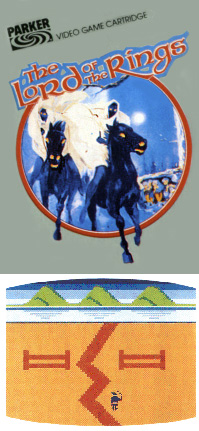
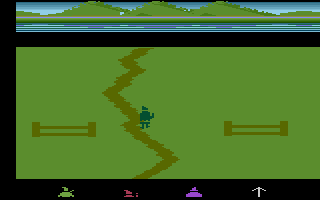
(LEFT): Parker Brothers catalog entry, with an artistic screenshot showing fences; (RIGHT) Hacked version of the prototype that added the fence code back in
Q: The early catalog screenshots showed fences along the road, and the graphics for them are still in the program, which someone hacked back in. Do you recall why these were removed (or never implemented)?
Mark Lesser: I think these were removed because there was a problem with how the Nazgul interacted with them.
Q: Did you work with any graphics or sound artists on either game? If so, do you recall who helped with what?
Mark Lesser: On Lord of the Rings, Parker Bros. hired a consultant to do the artwork, and she was a talented artist, but the limitations of the VCS were just too restricting for her. I don't recall if there was any sound help. The programming and design were my responsibility.
Q: Where did you work after Parker Brothers?
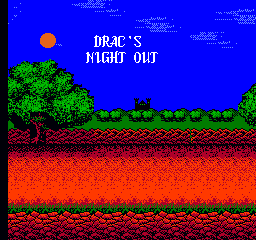 Mark Lesser: After Parker Brothers, I worked with Rex Bradford at Microsmiths on and off for several years.
We worked on many game systems including Apple IIgs, Atari ST, PC, Mac, NES, Sega Master System and Sega Genesis. I programmed the Apple IIgs version and helped program the Mac version of Mean 18. Mean 18 was an original design of Rex's. We also programmed Kings Quest for the Sega Master System. I believe this was the first version of Kings Quest that ran without a keyboard, so that we had to created menus for dialogue.
Mark Lesser: After Parker Brothers, I worked with Rex Bradford at Microsmiths on and off for several years.
We worked on many game systems including Apple IIgs, Atari ST, PC, Mac, NES, Sega Master System and Sega Genesis. I programmed the Apple IIgs version and helped program the Mac version of Mean 18. Mean 18 was an original design of Rex's. We also programmed Kings Quest for the Sega Master System. I believe this was the first version of Kings Quest that ran without a keyboard, so that we had to created menus for dialogue.
My favorite title at Microsmiths was Drac's Night Out, which Rex Bradford and I designed and programmed for the Nintendo NES. This was a fun game where the user controlled Dracula in his attempt to escape his castle by tricking and avoiding or hypnotizing the pursuing villagers, and gaining strength from their blood. We designed a series of Rube Goldberg-like contraptions on each floor of the castle that, when properly triggered, could thwart the villagers. We developed this game as consultants to Parker Bros. As we neared completion of the game, PB insisted that we include Reebok as a sponsor of the game by having Dracula wear Reebok Pump shoes! Reluctantly we complied, but the sponsorship was not enough to save the game and, although completed, it was never marketed.
Q: Where did you go after Microsmiths?
Mark Lesser: Eventually I formed my own company, MBL Research, Inc. In 1991 I met Paul Neurath. Paul's company, Blue Sky Productions (later renamed Looking Glass Technologies), had negotiated a contract with Electronic Arts to do Madden '93 on the Sega Genesis. But Paul did not have a developer with Genesis experience and he offered me the job. I proceeded to do Madden '93 as a sub-contractor to Blue Sky. When the game was complete, EA offered a contract directly to me for development of NHL '94 on the Genesis, which I enthusiastically took, and stayed with the NHL series for many years. My company at one point developed NCAA College Football for the Genesis.
I also worked directly with Barry Morstain, the founder of Micro League Sports, but I don't know if I did this work while I was part of Microsmiths.
Q: Occasionally, programmers would put Easter eggs in some of their games that would reveal their name, or a message. Are there any in your titles?
Mark Lesser: In some of the NHL series, there were several Easter eggs, including the ability to create super players. Other games had testing modes which acted like Easter eggs, but I don't recall specifics.
Q: Were there any features you would have liked to added, or any known bugs or glitches that gave you trouble (or never got resolved)?
Mark Lesser: There were many horrific bugs that got let go because they either got spotted too late by me or the publisher or, embarrassingly, by the public. For example, in Mattel Baseball, with a man on second, if the batter walks, the man on second advances. In one of the NHL Genesis games, in season mode, the number of games won in a successful season can wrap around to zero
Q: Throughout your career, were there any games or projects that you worked on that ultimately never got released or even finished?
Mark Lesser: Many. Drac's Night Out and Lord of the Rings both were completed but not released. I worked on at least two handhelds at Parker Brothers, one an electronic word game and the other a binocular display space shooter (based heavily on the binoculars used by Luke Skywalker in Star Wars). There were others as well.
Q: What was the easiest/hardest part of designing a game?
Mark Lesser: In some ways, the hardest part was the game tuning, since this required first that the tunable algorithms allowed a bandwidth that matched the range of tuning, and second that, of course, the game be fun and playable. The tuning is always particularly difficult because the time and marketing pressures can be overpowering. If a game has merit, everyone and their uncle at the publisher have to have their say, resulting in a kind of tug of war. As for the easiest part, I suppose it is the early brainstorming of design and implementation choices, because for a short time, one can think about the game without paying enough attention to the later harsh realities.
Q: If you had a chance to redo any of your games (both handheld and video), what would you change (if anything)?
Mark Lesser: I could write a book on things I would like to redo. Besides fixing bugs, the tuning of many games needed more time and fewer outside 'suggestions'. NHL'95 was an example, where the player control, especially for the goalie, seemed jerky and needed more tuning. The only game I ever did that was as perfect as I could make it was my first - Auto Race, which, given the 511 byte program size and the lack of sound hardware, I think was as good as possible.
Q: What were some of your experiences working for Rockwell, Parker Brothers, Microsmiths, etc? Do you have any stories or anecdotes from working at them?
Mark Lesser: Many experiences come to mind. I left Rockwell and California in answer to the call of the wild, and went 'back to the land' in Maine around 1976, which was a somewhat popular thing to do back then. I lived in a self-built cabin in the woods without electricity or running water.
After about a year I started traveling back to LA for 3 month stints programming handhelds as a consultant to Rockwell and to Mattel directly. I would go from living like a woodsman in the wilds of Maine to a very fancy house on Linnie Can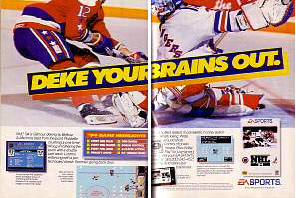 al
in Venice, CA, driving a flashy new convertible. This continued every other 3 months for about 4 years. What a trip in and out of the fast lane! I also remember Halloween parties at Mattel with the artists creating incredible costumes, like the costume of an upside-down lady - the real lady inside the costume would hug you with her arms which appeared to be legs and give out kisses like that. There were also lots of great development moments, like getting one-timers
in NHL to work for the first time, or getting Mattel Football tuned so that it was fun for the first time. And I remember being introduced to the sport of hockey for the first time. I knew almost nothing about hockey and had never watched a game when I appeared at EA with the contract for NHL '94. Some of the EA staff took me to a live hockey game and I tried to hide my ignorance. I learned the real game from programming the video game. I was embarrassed at first,
but by the time the EA guys realized that I knew nothing about hockey, I did.
al
in Venice, CA, driving a flashy new convertible. This continued every other 3 months for about 4 years. What a trip in and out of the fast lane! I also remember Halloween parties at Mattel with the artists creating incredible costumes, like the costume of an upside-down lady - the real lady inside the costume would hug you with her arms which appeared to be legs and give out kisses like that. There were also lots of great development moments, like getting one-timers
in NHL to work for the first time, or getting Mattel Football tuned so that it was fun for the first time. And I remember being introduced to the sport of hockey for the first time. I knew almost nothing about hockey and had never watched a game when I appeared at EA with the contract for NHL '94. Some of the EA staff took me to a live hockey game and I tried to hide my ignorance. I learned the real game from programming the video game. I was embarrassed at first,
but by the time the EA guys realized that I knew nothing about hockey, I did.
Q: Do you still own any of your games for these systems, either as a keepsake, or to show friends or family?
Mark Lesser: I do have lots of old systems, games, prototypes, magazine articles, advertising goodies, etc. Mostly they are in storage and I only show the old games once in a while to my kids.
Q: Which of your titles are your favorite, and what types of games in general?
Mark Lesser: I really liked Mattel Football for its novelty and its timing. I liked NHL '94 for the tuning - especially one-timers. I liked Drac's Night Out for its goofiness and those delicious Rube Goldberg contraptions. I like most genres of games so long as they don't involve getting stuck without knowing where to go or what to do. Fast-paced puzzle games are a consistent favorite. One game (not mine) that I always loved was Sim-Tunes, although I don't know that it works as a game so much as a musical and visual experience.
Q: Have you stayed in touch with any of your former co-programmers?
Mark Lesser: I talk to Rex Bradford now and again, and I hear from Jay Obernolte every year. Recently I was invited to a Parker Brothers reunion but I couldn't make it. Every now and again I get a surprise call from a voice from the past.
Q: What are your thoughts on how the industry has evolved? Some have remarked how things have come full circle, with the advent of simple cell phone and web-based games (and a few former Atari 2600 programmers have gone to do just that).
Mark Lesser: In the realm of most games there are some fairly distinct and often simple hooks that catch a player's interest and become addicting. Even with the shell of complex graphics and sounds, there remain these core experiences which a player yearns for. For many games the eye and ear candy are of fleeting interest. I was flabbergasted to discover a website of devoted followers of NHL '94 which includes software emulation of the game and tournaments and chat rooms going strong after more than a decade. I also was surprised when Mattel Football and Baseball were reissued a few years ago after about 25 years. Even with the crudest graphics and sounds there are hooks that carry sufficient and enduring interest. So much of the appeal of a game relates to the way it is tuned - the harmony between the elements. Complexity is not required to create fun gameplay. Having said that, I am amazed at the possibilities that present themselves in the world of simulation and world-building. The level of detail in modern games is so great that it is hard not to be enthralled. The most elusive aspect of gameplay remains the AI, and it is this that lags behind. Enormous processing power and the technical sophistication of developers will no doubt be up to the task.
Be sure to check out my Lord of the Rings article.
| GAME | SYSTEM | COMPANY | STATUS |
| Auto Race (aka Ski Slalom) | handheld | Mattel | released |
| Baseball | handheld | Mattel | released |
| Brain Baffler | handheld | Mattel | released |
| Football | handheld | Mattel | released |
| Horoscope Computer | handheld | Mattel | released |
| Missile Attack / Battlestar G. / Flash Gordon | handheld | Mattel | released |
| "electronic word game" | handheld | Parker Brothers | unreleased |
| "binocular display space shooter" | handheld | Parker Brothers | unreleased |
| Frogger II: Threeedeep! | Atari VCS/2600 | Parker Brothers | released |
| Lord of the Rings: Journey to Rivendell | Atari VCS/2600 | Parker Brothers | unreleased |
| Microleague Baseball | Apple II | M. L. Sports Association | released |
| King's Quest: Quest for the Crown | SMS | Parker Brothers (Microsmiths) | released |
| Drac’s Night Out | NES | Parker Brothers (Microsmiths) | unreleased |
| Little Computer People | Atari ST | Accolade (Microsmiths) | released |
| Mean 18 | Apple IIGS | Accolade (Microsmiths) | released |
| Mean 18 | MAC | Accolade (Microsmiths) | released |
| Madden '93 | Genesis | Electronic Arts (MBL Research) | released |
| Madden '94 | Genesis | Electronic Arts (MBL Research) | released |
| NHL '94 | Genesis | Electronic Arts (MBL Research) | released |
| NHL '95 | Genesis | Electronic Arts (MBL Research) | released |
| NHL '96 | Genesis | Electronic Arts (MBL Research) | released |
| NHL '97 | Genesis | Electronic Arts (MBL Research) | released |
| NHL '98 | PC | Electronic Arts (MBL Research) | released |
| NHL '99 | PC | Electronic Arts (MBL Research) | released |
| SuperCross 2000 | PC | Electronic Arts (MBL Research) | released |